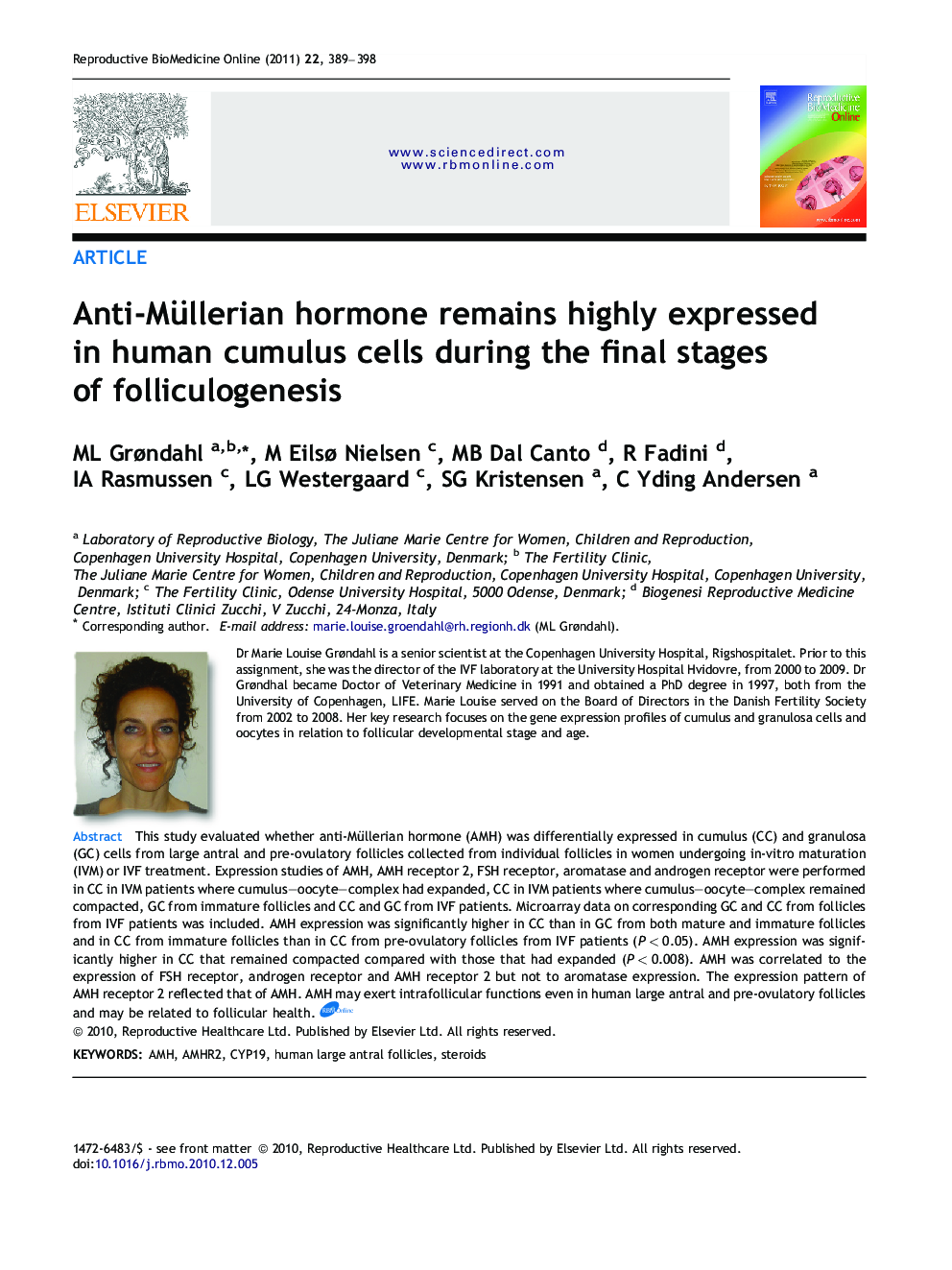| Article ID | Journal | Published Year | Pages | File Type |
|---|---|---|---|---|
| 3971733 | Reproductive BioMedicine Online | 2011 | 10 Pages |
This study evaluated whether anti-Müllerian hormone (AMH) was differentially expressed in cumulus (CC) and granulosa (GC) cells from large antral and pre-ovulatory follicles collected from individual follicles in women undergoing in-vitro maturation (IVM) or IVF treatment. Expression studies of AMH, AMH receptor 2, FSH receptor, aromatase and androgen receptor were performed in CC in IVM patients where cumulus–oocyte–complex had expanded, CC in IVM patients where cumulus–oocyte–complex remained compacted, GC from immature follicles and CC and GC from IVF patients. Microarray data on corresponding GC and CC from follicles from IVF patients was included. AMH expression was significantly higher in CC than in GC from both mature and immature follicles and in CC from immature follicles than in CC from pre-ovulatory follicles from IVF patients (P < 0.05). AMH expression was significantly higher in CC that remained compacted compared with those that had expanded (P < 0.008). AMH was correlated to the expression of FSH receptor, androgen receptor and AMH receptor 2 but not to aromatase expression. The expression pattern of AMH receptor 2 reflected that of AMH. AMH may exert intrafollicular functions even in human large antral and pre-ovulatory follicles and may be related to follicular health.During folliculogenesis, the cells surrounding the oocyte differentiate from one to two cell types: granulosa cells that mainly ensure hormone and growth factor production and cumulus cells that nurse the oocyte. This study focused on differences in gene activity between the two cell types and between late stages of follicle development. The genes investigated included anti-Müllerian hormone (AMH), which was found to be differentially expressed in the two cell types and between the developmental stages. Strong correlation was found between AMH gene activity and that of several other central genes that has been suggested to play a role in the health of the follicle.
